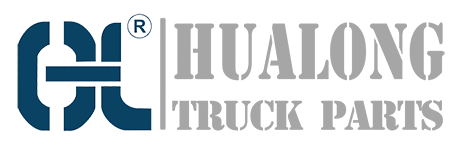1. Understanding the Basics of dual hydraulic cylinders
Dual hydraulic cylinders are an essential component in hydraulic systems, providing the force required to move heavy loads and perform various tasks. These cylinders consist of two individual hydraulic cylinders connected in parallel, allowing for increased power and stability. By harnessing the power of hydraulic pressure, dual hydraulic cylinders are capable of generating immense force, making them ideal for applications that require heavy lifting or precise movements.
2. Advantages of Dual Hydraulic Cylinders
Dual hydraulic cylinders offer several advantages over single hydraulic cylinders. Firstly, their parallel configuration allows for increased force output, making them suitable for applications that demand high load capacities. Additionally, dual hydraulic cylinders provide enhanced stability and control, minimizing the risk of tilting or imbalance during operation. Their ability to distribute force evenly also ensures smooth and precise movements, making them valuable in industries such as construction, manufacturing, and material handling.
3. Applications of Dual Hydraulic Cylinders
Dual hydraulic cylinders find extensive use in various industries due to their versatility and power. One common application is in heavy machinery, such as excavators and cranes, where they enable efficient lifting and movement of heavy objects. They are also utilized in hydraulic presses for tasks like metal forming and stamping. In the construction industry, dual hydraulic cylinders are employed in backhoes, loaders, and bulldozers to perform tasks like digging, pushing, and lifting. Moreover, they are vital components in hydraulic systems of agricultural machinery, forestry equipment, and even aircraft landing gears.
4. Components and Operation of Dual Hydraulic Cylinders
Dual hydraulic cylinders consist of several key components, including the cylinder barrel, piston, piston rod, and seals. The cylinder barrel houses the piston and fluid, while the piston separates the fluid into two chambers. As hydraulic fluid is pumped into one chamber, it pushes the piston and moves the connected load. Simultaneously, the fluid from the other chamber returns to the reservoir, completing the cycle. The movement of the piston is controlled by hydraulic valves and a hydraulic pump, which generate the necessary pressure to operate the cylinders.
5. Factors to Consider When Choosing Dual Hydraulic Cylinders
When selecting dual hydraulic cylinders for a specific application, it is crucial to consider various factors. Load capacity is one of the primary considerations, as the cylinders must be capable of handling the weight of the intended load. Stroke length, diameter, and operating pressure are also essential parameters to determine compatibility. Additionally, factors such as mounting options, environmental conditions, and maintenance requirements should be taken into account to ensure optimal performance and longevity.
6. Maintenance and Troubleshooting of Dual Hydraulic Cylinders
Proper maintenance is vital to ensure the longevity and reliable operation of dual hydraulic cylinders. Regular inspections of seals, rods, and fluid levels help identify potential issues before they escalate. It is essential to follow the manufacturer's guidelines for lubrication, filter replacement, and system cleanliness. In the event of any problems, troubleshooting techniques such as checking for leaks, verifying valve settings, and inspecting hydraulic lines can help diagnose and resolve common issues.
7. Safety Considerations with Dual Hydraulic Cylinders
Working with dual hydraulic cylinders requires adherence to strict safety protocols to prevent accidents and injuries. It is crucial to follow proper lockout/tagout procedures when performing maintenance or repairs. Adequate training should be provided to personnel working with hydraulic systems to ensure they understand the risks associated with high-pressure hydraulic fluids. Regular inspections of the cylinders and associated components can help identify potential safety hazards and mitigate them before they pose a threat.
8. Innovations and Future Developments in Dual Hydraulic Cylinders
The field of hydraulic systems is constantly evolving, and dual hydraulic cylinders are no exception. Manufacturers are continuously striving to enhance the performance and efficiency of these cylinders. Innovations such as advanced seal materials, improved piston designs, and integrated sensor technology are being implemented to optimize their functionality. Additionally, efforts are being made to develop hydraulic systems that are more environmentally friendly by reducing energy consumption and utilizing biodegradable hydraulic fluids.
9. Comparing Dual Hydraulic Cylinders with Other Actuation Methods
While dual hydraulic cylinders offer many advantages, it is essential to consider alternative actuation methods for specific applications. Electrical actuators, for example, are gaining popularity due to their precise control and energy efficiency. Pneumatic actuators are another alternative, offering simplicity and cost-effectiveness. However, in tasks requiring high force output and heavy load capacities, dual hydraulic cylinders remain unmatched in their performance and reliability.
10. Conclusion
Dual hydraulic cylinders are a crucial component in various industries, providing the necessary force and control for heavy lifting and precise movements. Their parallel configuration allows for increased power and stability, making them ideal for demanding applications. By understanding their components, operation, and maintenance requirements, industries can harness the full potential of dual hydraulic cylinders and benefit from their immense power.

